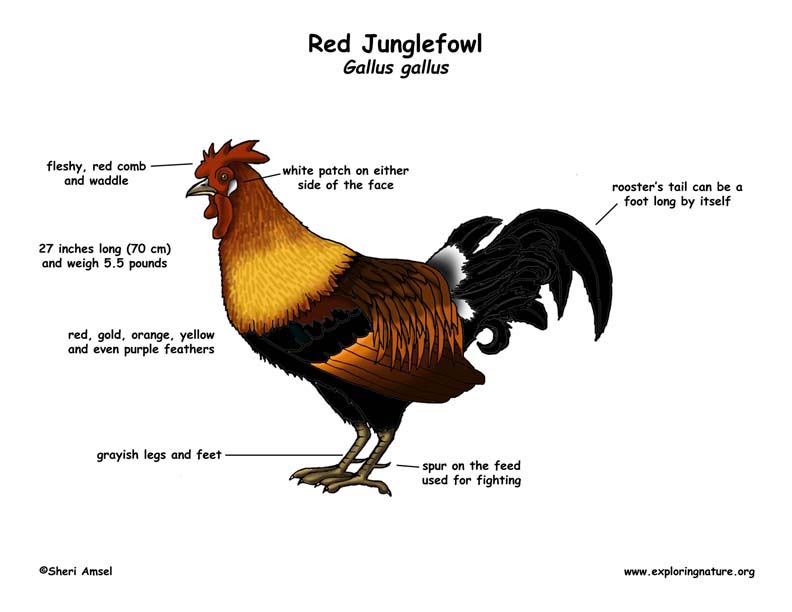

They are found in southern Asia and India, but because of domestication have been introduced around the world.
In the wild, they live in tropical and subtropical forests that have openings where the fowl can forage for food.
They are bright, colorful birds with red, gold, orange, yellow and even purple feathers. They can reach 27 inches long (70 cm) and weigh 5.5 pounds. The rooster’s tail can be a foot long by itself. They have a white patch on either side of the face and a fleshy, red comb and waddle. Their legs and feet are grayish.
They have a “pecking order” in their flock with one dominating male called a cock.
They eat plants, seeds, worms, grain and insects.
Females lay an egg each day in the spring and summer. They hatch in about 3 weeks. She will care for and protect the chicks until they about 3 months old when she will chase them away from the group.
The can live for 30 years in captivity.
Kingdom: Animalia
Phylum: Chordata
Class: Aves
Order: Galliformes
Family: Phasianidae
Subfamily: Phasianinae
Genus: Gallus
Species: G. gallus
When you research information you must cite the reference. Citing for websites is different from citing from books, magazines and periodicals. The style of citing shown here is from the MLA Style Citations (Modern Language Association).
When citing a WEBSITE the general format is as follows.
Author Last Name, First Name(s). "Title: Subtitle of Part of Web Page, if appropriate." Title: Subtitle: Section of Page if appropriate. Sponsoring/Publishing Agency, If Given. Additional significant descriptive information. Date of Electronic Publication or other Date, such as Last Updated. Day Month Year of access < URL >.
Amsel, Sheri. "Red Junglefowl" Exploring Nature Educational Resource ©2005-2024. March 27, 2024
< http://www.exploringnature.org/db/view/247 >

